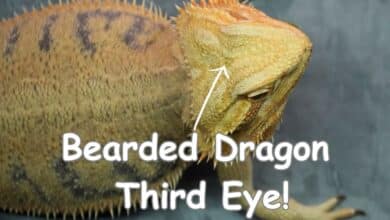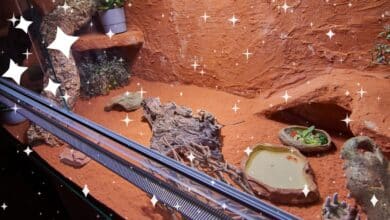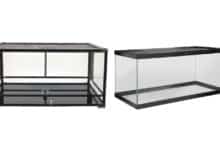How to Stop Bearded Dragon Nail Bleeding & Treat Infection
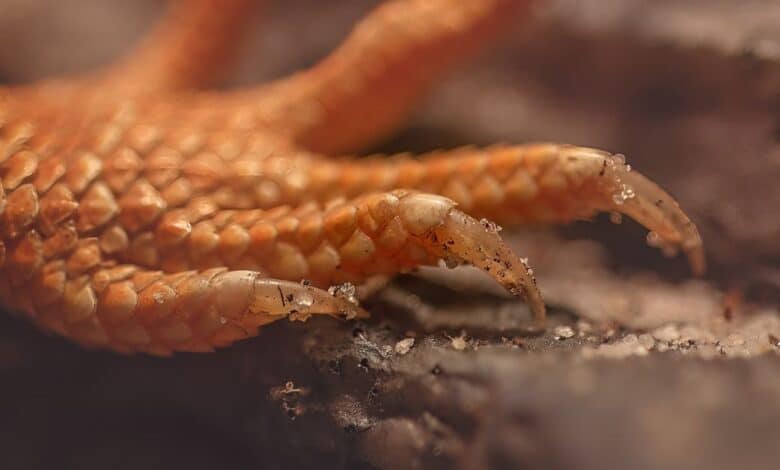
A bearded dragon’s nail will begin to bleed if the quick inside of the nail is cut or injured. The bearded dragon nail quick is the living tissue that supplies blood vessels and nerves to the nail of a bearded dragon’s toe.
If you accidentally cut the nail too short or the bearded dragon has a broken nail that damaged the quick, then you must treat the nail immediately to reduce the risk of infection. Especially if the nail completely fell off the toe and there is an open wound.
This guide will describe how to stop a bearded dragon nail that is bleeding if you have accidentally cut the quick during a nail trimming or if it was an accidental toe injury. We will describe exactly how to identify and treat nail infections that may result from bacteria getting into the nail wound.
Contents
What Does a Quick In Beardie’s Nail Look Like?
The quick is easy to spot in a beardie’s nails with lighter-colored nails, as it appears as a pinkish or reddish area within the nail. However, seeing bearded dragons with darker-colored nails can be more challenging.
Regular trimming will cause the quick to recede and make it easier to keep the nails at a safe length over time.
What Happens If You Cut a Bearded Dragon Quick?
Cutting a bearded dragon nail quick can be a painful and stressful experience for your pet as the nerve will be damaged. The nails will begin bleeding if you accidentally cut the quick while trimming a bearded dragon’s claws.
Cutting the quick can cause your bearded dragon to become fearful or hesitant during future nail-trimming sessions. There is no sure way to prevent them from becoming afraid if you make a mistake. However, give your beardie plenty of treats during and after the nail trimming process to distract their attention away from any discomfort they may have from the cut nail quick.
Most of the time, the bleeding may be minor and stop on its own. However, if the bleeding is more severe or doesn’t stop, you should treat it immediately. We will get into treatment options in the next section.
How to Stop Bearded Dragon’s Nail Quick From Bleeding
Here are things you can do to stop the nail quick from bleeding:
- Apply pressure to the affected area with a clean cloth or gauze until the bleeding stops.
- Use a styptic powder, a styptic pencil, or a blood clotting gel to help to stop bleeding by promoting blood clotting.
- If you don’t have a styptic product or a blood-clotting gel, try regular cornstarch to help stop the bleeding.
After the bleeding stops, keep a close eye on your bearded dragon and monitor the nail with the cut quick for any signs of infection. Signs you should look for are redness, swelling, or discharge from the nail with the damaged quick.
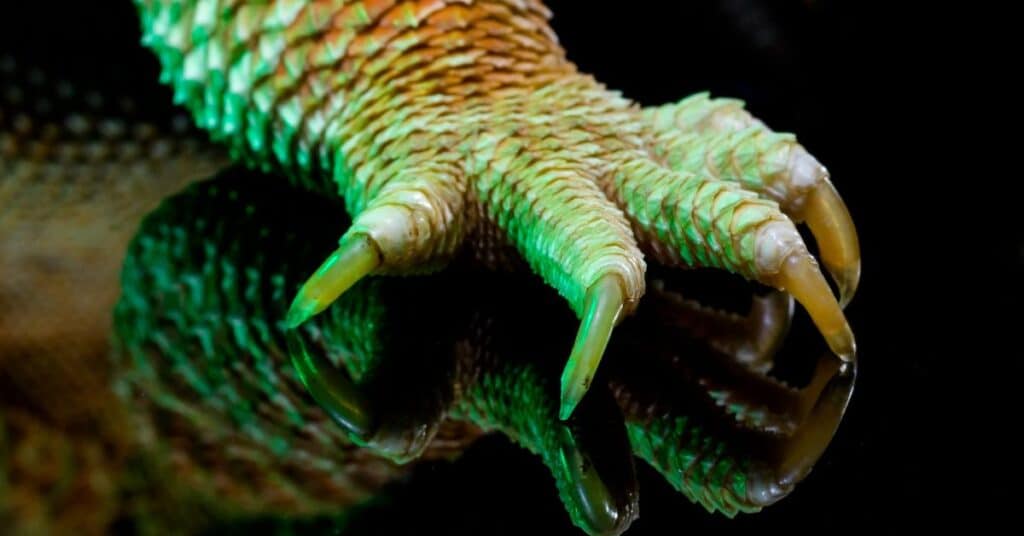
How to Treat an Infected Bearded Dragon Nail Quick
Here are the steps to take if you suspect your bearded dragon has a nail quick infection:
1) Observe
Observe the infected nail and surrounding tissue for signs of infection, including swelling, redness, discharge, and pain.
Soak in Warm Antibacterial Water
To help manage the infection at home, you can soak the affected foot in a bowl of warm, shallow water with diluted betadine or chlorhexidine for 10-15 minutes twice daily. This bathing is a safe way for lizards and other reptiles to reduce inflammation and kill bacteria. However, be sure they do not ingest this solution.
Apply Antibiotic Ointment
Apply a topical antibiotic ointment such as Neosporin or bacitracin to the infected nail and surrounding tissue. Be sure to use a clean applicator or sterile gauze pad to avoid introducing additional bacteria to the area.
Replace the Substrate with Hard Tiles & Remove Accessories
Replace the substrate in the bearded dragon’s enclosure with hard tiles and remove any climbing obstacles, including wooden logs or pieces of driftwood. These changes prevent bacteria growing on or within those objects from worsening the infection. These changes will help protect from potential damage from the bearded dragon climbing on the wound from occurring.
Monitor Behavior & Appetite
Monitor the bearded dragon’s behavior and appetite, as infections can be painful and cause loss of appetite. If the bearded dragon appears lethargic or stops eating, seek veterinary care immediately.
Seek Vet Care If It Worsens
If the infection does not improve within a few days of home treatment, or if it worsens, seek veterinary care. Your vet may prescribe oral antibiotics or other forms of treatment to manage the infection.
Remember that a bearded dragon nail quick infection can progress into a severe condition requiring prompt veterinary care as the infection can spread into the bloodstream. If the infection spreads, it may impact other areas of the beardie’s body if not treated adequately and swiftly with proper care.
Sterilize Substrate & Accessories Before Replacing
After healing the bearded dragon’s nail quick infection, sterilize the substrate and other objects inside of its tank to eliminate any bacteria. If possible, purchase new substrate and accessories to ensure the bacteria is completely eliminated. However, be sure to sanitize those before putting them into the tank.
How Much Does a Vet Visit Cost for a Bearded Dragon Nail Infection?
A vet visit to diagnose and treat a bearded dragon nail infection can cost anywhere from $50 to $200 or more, depending on the treatment needed. This cost may include the initial exam, diagnostic tests such as blood work or cultures, medications including antibiotics, and follow-up visits.
Remember that the cost of treatment can increase if the infection is severe or if complications arise. The cost of a vet visit to treat a bearded dragon nail infection can vary depending on the location, the severity of the condition, and the specific veterinary clinic.
While the cost of veterinary care can be a concern for pet owners, always prioritize the health and well-being of your bearded dragon. Please seek vet care promptly if you suspect an infection or other health issues.
Ways to Prevent Bearded Dragon Nail Bleeding
- Use a proper nail trimmer: Human nail clippers are not designed for bearded dragon nails and can cause injury to the nail quick. Instead, use nail clippers or scissors designed for use on pets. Some dog or cat nail clippers are better options, but these tend to be larger than we need for a bearded dragon’s small nails.
- Provide proper substrate in the bearded dragon’s enclosure: Too many rough surfaces can cause excessive wear on the nails, leading to injury or exposing the quick. Provide a substrate that is soft enough to prevent excessive wear, but firm enough to allow for digging and other natural behaviors. With a good base substrate, place in a few accessories such as a slate tile, rocks, or other items found in their natural environment that will naturally file their nails but will not be too aggressive.
- Regularly trim the nails: Regular nail trimming can help prevent the nails from growing too long and catching on objects in the enclosure. This can help prevent injury to the nail quick.
- Monitor the bearded dragon’s behavior: Watch for signs of discomfort or limping, which can indicate an injury to the nail or nail quick.


